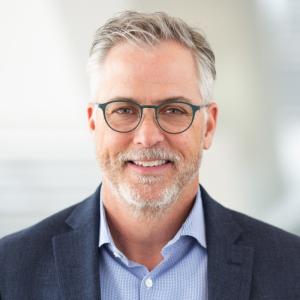Mark Day, CEO of Case Western Reserve University spinout AlensiaXR, recently sat down with us to discuss his journey from Microsoft to leading a cutting-edge mixed reality startup. With over 18 years of experience at Microsoft and a background in entrepreneurship, Mark offers unique insights into leadership, team building, and the future of immersive technology.
Can you tell us about your background and what led you to AlensiaXR?
After spending 18 years at Microsoft, where I ran the mixed reality business for over 5 years, I was actually looking forward to retirement. However, the team at Case Western Reserve, including Dr. Griswold and his studio, along with the Technology Transfer Office, drew me back into the working world. They had developed HoloAnatomy®, a project that was making a profound difference in how students were learning about human anatomy using holograms instead of cadaveric dissection.
The results were astounding—students were learning twice as fast and retaining information 44% longer after being retested 8 months later. With 8 to 10 paying customers already arranged, we spun the project out of the university, and that's how AlensiaXR was born. My experience in mixed reality at Microsoft, combined with the potential I saw in HoloAnatomy®, got me excited to lead this new venture.
How would you describe your leadership style and approach to building teams?
My leadership style is rooted in three main principles. First is allyship and inclusivity, which involves appreciating the diverse backgrounds and experiences that everyone brings to the table. I believe in leading from behind as much as from the front, supporting my people and promoting teamwork. The second principle is collaboration, where we measure people's performance not just on individual merit, but also on how well they work with teams. This is assessed through 360-degree peer reviews. The third principle is what I call the "don't build it here" mentality, which encourages borrowing ideas and learning from others. I believe there's almost nothing in business or technology that someone hasn't already thought about. Overall, I foster a growth mindset and create an environment where people feel safe to be vulnerable and do their best work.
How do you implement these leadership philosophies in day-to-day operations, especially with a new team?
Implementing these leadership philosophies is about recognizing that no one person can do it all. I recommend pairing experienced team members with those who have less experience in certain areas, allowing for mentorship and knowledge sharing. We conduct regular stand-up meetings to check in on both personal well-being and project progress. These can be as simple as asking,
"How are we feeling today? What's the energy we're bringing to the table?" I also advocate for using appreciative inquiry and coaching techniques rather than giving direct answers. This involves asking questions to help people lead themselves to the right conclusions. Creating a safe environment where people feel comfortable being vulnerable is crucial. I believe that supporting team members' growth, even if it means they eventually move on to other opportunities, is essential for fostering a positive and productive work culture.
How has the vision for AlensiaXR evolved since its inception?
The evolution of AlensiaXR's vision is a testament to the power of innovation and adaptability. Initially, our mission was clear: transform graduate medical education by replacing cadaveric dissection with holographic and mixed reality technology for learning human anatomy. However, as we dug deeper and rewrote our codebase, we realized the potential of our platform extended far beyond medical education.
We've now reinvented our platform as an immersive education tool that can be used across various industries. It can help people learn anything from bricklaying to rocket science, especially when combined with artificial intelligence and computer vision. I envision AlensiaXR being at the forefront of the next wave of ubiquitous computing, transforming the way humans understand and interact with the physical world. This expanded vision encompasses not just medical sciences, but any field that involves understanding and interacting with the physical world, from microscopic to astronomic scales.
What are some exciting milestones or updates you're looking forward to?
We have several exciting milestones and updates for AlensiaXR. In the near term, we're on track to release version 2.0 of HoloAnatomy® in 2025, which is a significant milestone in commercializing our initial product. Beyond that, we're excited about launching our larger immersive education platform for use in commercial, industrial manufacturing, industrial design, and even military training spaces. Looking further ahead, I'm particularly enthusiastic about partnerships we're exploring with space agencies and military installations. These collaborations aim to use computer vision and robotics in conjunction with mixed reality, potentially revolutionizing how we train robots to perceive and interact with the physical world. While emphasizing that this isn't about creating a "Skynet" scenario, I believe this represents the next evolution of computing that could profoundly change how we see and interact with the world around us.
Would you have any advice for aspiring entrepreneurial students?
My advice for aspiring entrepreneurial students is simple yet powerful: Never give up. I acknowledge that dreams may evolve, and entrepreneurs will certainly face fatigue, but persistence is key. I encourage students to be open to adapting their vision as they learn and grow, understanding that the journey of entrepreneurship often takes unexpected turns. My own path from Microsoft to AlensiaXR is a testament to the value of remaining open to new opportunities and being willing to apply one's skills and experiences in novel ways.
AlensiaXR is one of the CWRU-founded ventures in the CWRU Alumni Venture Fund portfolio.
This article was written by CWRU Alumni Venture Fund Fellow Evelin Urbancsok, class of 2025.


